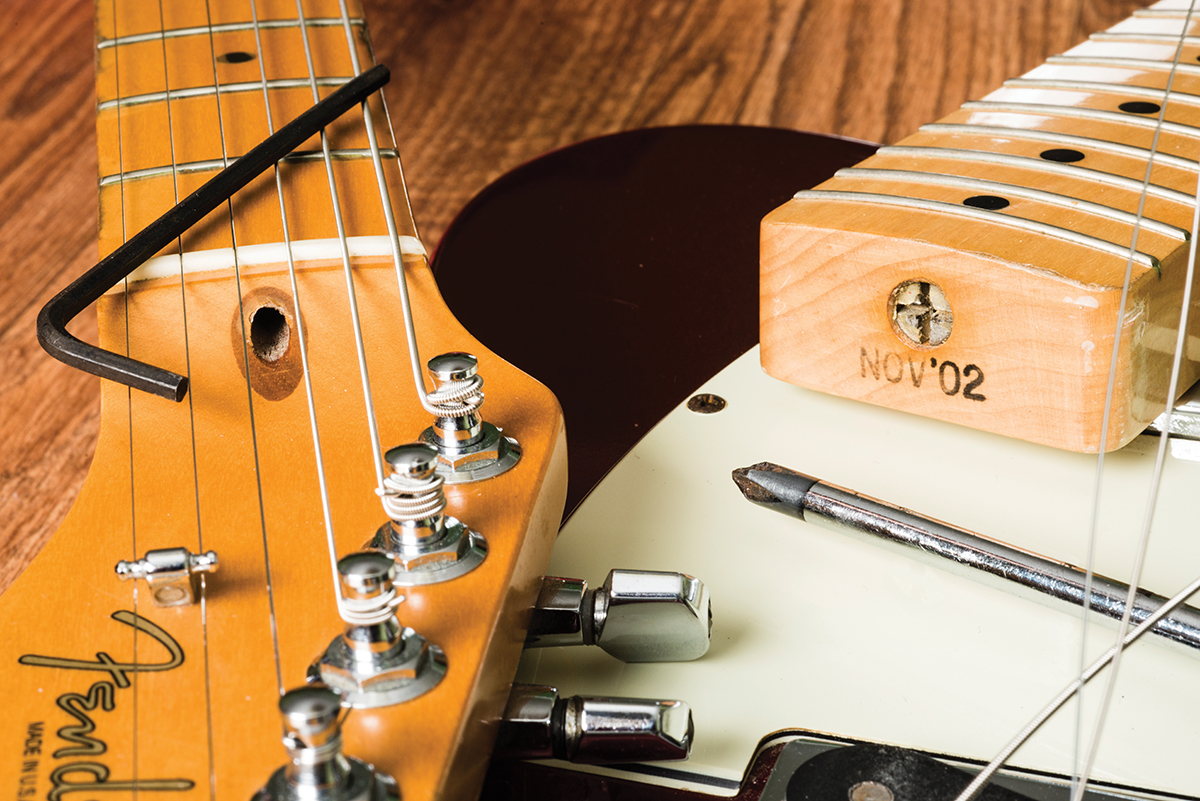So you’ve finally fulfilled your dream of owning a shiny new Fender guitar – congratulations! Now comes the important part: keeping that bad boy in prime condition. But fear not, fellow axe-wielders, for I am here to guide you through the treacherous waters of guitar maintenance dos and don’ts. Get ready to rock and roll your way to guitar greatness, with a few laughs along the way.
Contents
Understanding Your Fender Guitar: Importance of Proper Maintenance
When it comes to your Fender guitar, proper maintenance is key to keeping it rocking like a pro. Sure, you could just let it gather dust in the corner of your room like a forgotten relic from your teenage garage band days, but where’s the fun in that? Give your guitar the love and attention it deserves, and you’ll be rewarded with sweet, sweet music that will make all your friends jealous.
So, why is proper maintenance so important, you ask? Well, for starters, a well-maintained guitar will sound better, play better, and last longer. Plus, it’ll make you look like a total rock star when you bust it out at your next jam session. And let’s face it, who doesn’t want to look like a total rock star?
Here are a few tips to help you keep your Fender guitar in tip-top shape:
- Keep it clean by wiping it down with a soft cloth after each use.
- Make sure the strings are properly tuned and replaced when necessary.
- Store it in a cool, dry place to prevent warping.
Remember, your Fender guitar is more than just a tool for making music – it’s a work of art that deserves to be treated with care and respect. So show your guitar some love, and it will reward you with hours of musical bliss.

cleaning-your-fender-guitar-techniques-for-preserving-its-shine”>Cleaning Your Fender Guitar: Techniques for Preserving Its Shine
So, you’ve got yourself a shiny Fender guitar, huh? Well, it’s time to keep that beauty looking as sparkling as ever! Here are some techniques to preserve that shine:
- **Regular Dusting:** Grab a soft, lint-free cloth and gently wipe down your guitar after each jam session. This will prevent dust from accumulating and dulling its finish.
- **Use Guitar Polish Sparingly:** Invest in a good quality guitar polish and apply it with a clean cloth in small circular motions. Remember, a little goes a long way – you don’t want to drown your poor Fender in polish!
- **Avoid Harsh Chemicals:** Your guitar is not a kitchen counter! Avoid using harsh cleaning chemicals that can strip away its natural shine. Stick to guitar-specific cleaners to keep it looking top-notch.
And there you have it – with these simple techniques, you can keep your Fender guitar looking as shiny as the day you first brought it home. So go ahead, strum away and show off that beautiful instrument with pride!

tuning-and-string-care-ensuring-optimal-performance”>Tuning and String Care: Ensuring Optimal Performance
Ever wonder why your guitar sounds like a dying cat instead of a harmonious melody? It might be time to give your strings some love and attention. Here are some tips to ensure optimal performance:
- **Tune regularly:** Just like a fine-tuned engine, your guitar needs to be in tune to perform at its best. Invest in a good tuner and make sure to adjust those strings before each jam session.
- **Stretch those strings:** Before you start shredding, give your strings a good stretch to avoid annoying tuning issues mid-song. Pull gently on each string to help them settle in.
- **Keep it clean:** Dust and grime can build up on your strings, affecting their tone and longevity. Use a soft cloth to wipe down your strings after each session and keep them sounding fresh.
Remember, a well-cared-for guitar is a happy guitar. So show your strings some love and they’ll reward you with sweet sounds for years to come!
Humidity and Temperature Control: Creating the Ideal Environment
When it comes to creating the ideal environment, humidity and temperature control are key factors to consider. Nobody wants to feel like they’re living in a tropical rainforest one minute and Antarctica the next. It’s all about finding that sweet spot where you feel comfortable and your plants, pets, and guests are happy too.
First off, let’s talk about humidity. Too much humidity can leave your space feeling damp and sticky, while too little humidity can make it feel like you’re living in the desert. To strike the perfect balance, consider investing in a humidifier or dehumidifier to keep things just right. Your skin will thank you!
Now, onto temperature control. We’ve all been there – sweating bullets in the summer and shivering in our parkas in the winter. To combat these extremes, a thermostat is your new best friend. Set it and forget it, and say goodbye to those polar vortexes and heat waves.
Remember, achieving the ideal environment is all about finding that Goldilocks zone – not too hot, not too cold, not too humid, not too dry. So go forth and create your own oasis of comfort and relaxation!

storage-protecting-your-instrument-from-damage”>Handling and Storage: Protecting Your Instrument from Damage
Fellow musicians, we all know the pain of seeing our beloved instruments damaged. Whether it’s a scratch on your guitar or a dent in your trumpet, it’s heartbreaking to see your precious instrument in less than perfect condition. But fear not, for I am here to share with you some tips on how to protect your instrument from damage!
Case closed, literally: Always keep your instrument in its case when not in use. This will protect it from dust, water, and clumsy roommates who might accidentally knock it over. Plus, a stylish case can double as a fashion accessory, so you’ll look cool while keeping your instrument safe.
Temperature control: Avoid extreme heat or cold when storing your instrument. Just like you, your instrument prefers a cozy, climate-controlled environment. So, no leaving your violin in a hot car or your saxophone in a freezing garage!
Handle with care: When transporting your instrument, always hold it by the handle or strap. Avoid carrying it by the neck or delicate parts, unless you want to give your instrument a chiropractic adjustment. Treat your instrument like a fragile piece of art – because let’s face it, it is!
Regular Inspections and Professional Maintenance: When to Seek Expert Help
Regular inspections and professional maintenance are vital for keeping your home in tip-top shape. But how do you know when it’s time to seek expert help? Here are some signs that it’s time to call in the pros:
- Strange noises or smells: If you’re hearing strange noises coming from your HVAC system or noticing odd smells around your home, it’s time to have a professional take a look.
- Leaks or water damage: If you’re seeing water stains on your ceilings or walls, or noticing leaks under sinks or around appliances, it’s time to call in the experts before things get worse.
- Electrical issues: If you’re experiencing frequent power outages, tripped circuit breakers, or flickering lights, it’s best to leave the electrical work to the professionals.
Remember, it’s always better to be safe than sorry when it comes to home maintenance. So don’t hesitate to seek expert help if you’re unsure about tackling a repair or maintenance task on your own. Your home will thank you for it!
FAQs
Why is it important to maintain my Fender guitar?
Well, have you ever heard the saying “a neglected guitar is a sad guitar”? Just like a pet or a plant, your guitar needs some TLC to stay in top shape and keep making beautiful music for you.
What are some dos when it comes to maintaining my Fender guitar?
Do give your guitar a good wipe down after each use to get rid of any sweat or grime that may have built up. Do store your guitar in a case when you’re not using it to protect it from dust and potential damage. And do get your guitar set up by a professional every now and then to keep it playing like a dream.
What are some don’ts when it comes to maintaining my Fender guitar?
Don’t leave your guitar out in extreme temperatures or humidity levels – it’s not a fan of sauna or freezer conditions. Don’t use harsh chemicals to clean your guitar – it’s not a kitchen counter, after all. And don’t try to DIY major repairs if you’re not confident in your skills – it’s better to leave it to the pros.
How often should I restring my Fender guitar?
Ah, the age-old question. It really depends on how often you play and how dirty your strings get, but a good rule of thumb is every 1-3 months. If your strings start looking and sounding funky, it’s probably time for a change.
Rock on, Guitar Heroes!
There you have it, fellow Fender fanatics! Remember these simple dos and don’ts to keep your beloved guitar in tip-top shape and rocking like never before. We hope this guide has been as smooth as a perfectly tuned Fender Stratocaster. Now go forth and shred with confidence, knowing that your guitar is always in the best possible hands (or should we say, frets?) Keep strumming, keep rocking, and above all, keep maintaining that Fender beauty like the rockstar you are!



